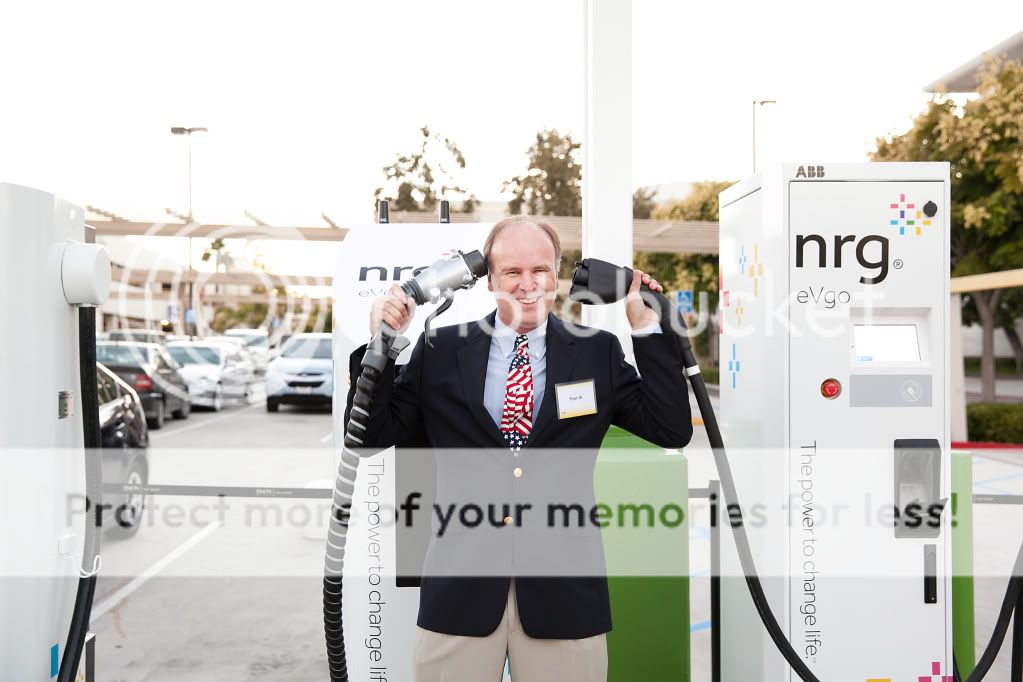Charging Standards Quick Electric Vehicle Charging Battle Just Beginning in Korea
Global electric vehicle companies have started to compete with each other for charging methods in Korea.
As GM Korea Company unveils its Chevy Spark EV with the SAE Combo DC fast charging system on August 27, the 2014 Kia RAY's CHAdeMO standard and Renault Samsung SM3 Z.E.'s AC charging method begin to vie with each other for the domestic standard of electric vehicle (EV) charging infrastructure.
With the release of the Chevy Spark EV, GM's Korean subsidiary announced that it has signed a Memorandum of Understanding (MOU) with the Ministry of Environment and manufacturers of electric car chargers. The company also revealed its intention to supply its own EV charging stations.
A spokesperson for GM Korea said, "We decided to develop and sell our own fast-charging equipment, since there is no charging infrastructure in Korea," adding, "Details will be explained in our presentation."
The Ministry of Environment is proceeding with its second project for EV fast-charging stations where both the CHAdeMO quick charging method and the AC charging method are available.
But the ministry is planning to review the 2014 project by considering market situations and technical problems for DC Fast charging with a combined charging system.
There are four standards for EV fast-charging in the global market, including the CHAdeMO method developed by Tokyo Electric Power Company, the SAE combo charging standard adopted by GM and BMW, China's system of DC normal charging for battery swaps, and the AC charging method chosen by Renault Samsung and Toyota.
These electric-vehicle charging systems are fighting for global dominance.
Japan's CHAdeMO is leading in infrastructure. But the influence of the SAE DC fast charging and AC charging systems in the entire EV market is huge.
American and European companies seem to be joining forces to prevent Japan's market dominance. In addition, China is another player in the market since the State Grid Corporation of China (SGCC) proposed its own standard by modifying CHAdeMO.
Each of these standards have both advantages and disadvantages.
SAE DC Combo Type 1 has an AC connector that is used in slow charging, as well as a DC connector that is utilized in fast charging, in a power inlet socket. Since both slow and fast charging is possible through a single socket, it has higher space efficiency. However, the Type 1 sends and receives charging information with a car online. And the frequency used in the Type 1 interferes with the Advanced Metering Infrastructure (AMI) that the Korea Electric Power Corporation (KEPCO) built nationwide. This is the biggest obstacle to the introduction of this method in Korea.
In contrast, CHAdeMO has different power inlet sockets for AC and DC. Despite lower space efficiency, there is no concern for interference with radio waves, because information travels through wires. A Controller Area Network (CAN) is used for communication. Even though each country has a different battery management system, each system can be made compatible with the others when the source of the program is made public.
The system using AC can be charged without AC/DC converters. Since it does not have any adapters, it is difficult to adjust to each country's power supply method.
In Korea, auto manufacturers are conducting psychological warfare on quick charging methods for battery-powered electric vehicles.
Supporters of the combo charging system complain that Hyundai Motors, which uses CHAdeMO, is blocking their market entry, while Hyundai says that any companies that aspire to export their products need to adjust to the domestic situation...



